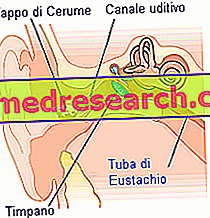
Toxoplasmosis can manifest itself in acute or chronic, symptomatic or asymptomatic form . The more or less serious clinical pictures of the disease, in fact, are closely related to the state of the individual's immune defenses and to the virulence of Toxoplasma gondii .
In immunocompetent subjects, acute infection almost always goes unnoticed and has no consequences. Only in 10-20% of cases, toxoplasmosis manifests itself with an increase in bilateral volume of the cervical lymph nodes (less often axillary or inguinal) and flu-like symptoms with fever, headache, muscle pain, malaise and sore throat. Atypical lymphocytosis, rash and hepatosplenomegaly may also occur. The picture almost always resolves spontaneously within a few months.
The course of toxoplasmosis is definitely different in immunosuppressed patients, in whom the infection (primary or reactivated) generally develops in a severe form. Primary toxoplasmosis or reactivation of the latent T. gondii in the body can give rise to manifestations affecting the central nervous system, the lungs, the heart and the eye. Headaches, fever, convulsions, focal neurological deficits (eg motor or sensory loss, cranial nerve paralysis and visual abnormalities), cerebral haemorrhages and generalized encephalopathy may occur. In some cases the infection evolves into the acute disseminated form, with serious involvement of several organs (myocarditis, pericarditis, hepatitis, pneumonia, etc.) and often fatal outcome.
Congenital toxoplasmosis represents a possible complication of infection acquired during pregnancy . In pregnant women, the infection is often asymptomatic or, at most, causes lymphadenopathy, asthenia and headache, without fever. The greatest danger is the transmission of the parasite vertically to the fetus. In cases of infection contracted within the sixth month of gestation, the fetus at birth may present jaundice, skin rash, hepatosplenomegaly, chorioretinitis, intracranial calcifications, hydrocephalus (or microcephaly) and psychomotor retardation. Furthermore, miscarriage and preterm labor can occur. Children with less severe infections, on the other hand, have a high risk of developing chorioretinitis, nystagmus, intellectual disabilities, convulsions or other symptoms even years later.



